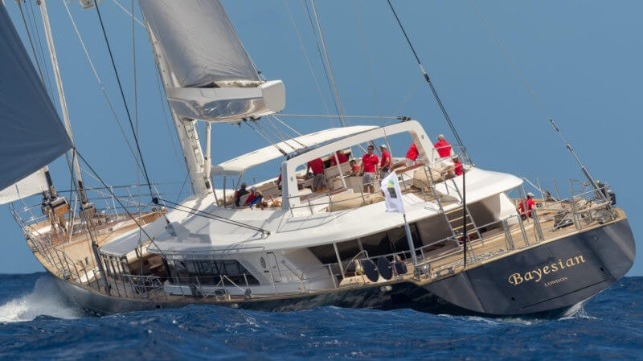Two More Crewmembers of Sunken Yacht Bayesian Are Under Investigation

A local prosecutor has added two more crewmembers to the list of investigative targets in connection with the sinking of the sailing yacht Bayesian, which went down in a sudden storm off Sicily last week with the loss of seven lives.
According to Italian media agencies, crewmembers Tim Eaton and Matthew Griffith are under investigation in the nascent inquiry, which could result in possible charges of manslaughter and negligent shipwreck. Griffith was on watch the night of the casualty, and Eaton was the vessel's engineer. The yacht's master, New Zealand citizen James Cutfield, 51, is also under investigation.
Under Italian law, suspects are notified that they are under investigation early in the process, and the announcement may or may not result in criminal prosecution depending upon the prosecutor's findings.
Cutfield initially cooperated with local investigators after the accident, but on Tuesday he opted to remain silent, his attorney told Italian media. It is possible that he may begin answering questions again later, after his defense counsel has had an opportunity to review the facts of the case.
Former captain details yacht's characteristics
Amidst ongoing speculaton about the cause of the sudden sinking, a former master of the Bayesian has released a statement with valuable details about the vessel's design and its survivability.
Much attention has been paid to Bayesian's retractable keel, which could be raised or lowered by about 20 feet. The design gave Bayesian the righting moment she needed to offset a massive single-masted schooner rig (the yacht featured the world's tallest aluminum mast) while providing a way to reduce the vessel's draft for access to smaller ports.
According to the former captain from 2015-20, Stephen Edwards, the retractable keel contained only 60 tonnes of the Bayesian's 200 tonnes of lead ballast, the rest being located in a fixed keel box. The vessel's stability booklet only required lowering the retractable keel when more than 60 nautical miles offshore, or when operating under sail, he said. Bayesian was anchored at the time of the casualty.
The Bayesian's shipbuilder has implied that the crew may have negligently left an exterior hatch open. However, Edwards was certain that the crew would not have left the yacht's single port-side shell hatch unclosed. Because the hatch was positioned so close to the waterline, it "was rarely used" and would only be opened in flat calm conditions. "100% it was not open at night," he wrote.
He detailed the yacht's likelier downflooding points - the ventilation ducts for the engine room and the accommodations. These would begin flooding the interior in a knockdown scenario exceeding 40-45 degrees of heel, unless vent dampers were closed. Lying at anchor with passengers aboard and the generators on, the vents would have been open.
No comments:
Post a Comment